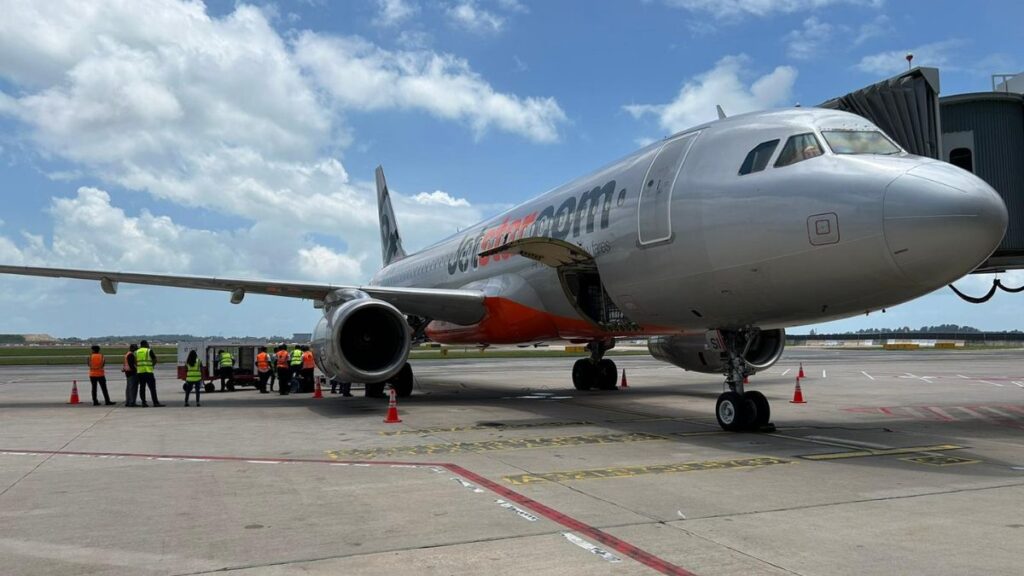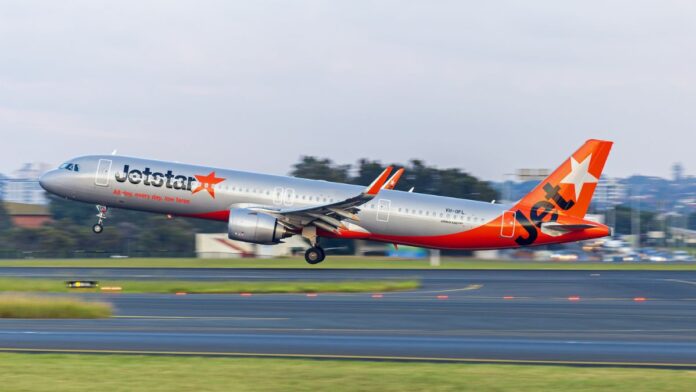Qantas Airways announced on June 10 that it will cease operations of its Singapore-based budget airline Jetstar Asia by July 31, 2025, marking the end of a 20-year run. The decision, which affects over 500 employees, underscores the shifting economics of low-cost air travel in Southeast Asia and signals potential structural changes within the regional aviation sector.
Jetstar Asia, established in 2004 as a joint venture between Qantas and Singapore-based Westbrook Investments, operated as a key player in the region’s low-cost carrier (LCC) market. However, mounting operational costs, intensifying competition, and evolving post-pandemic travel patterns have undermined the business case for continuing operations under the Jetstar Asia brand.
READ MORE: Here are 4 emerging travel destinations in Southeast Asia
A strategic withdrawal, not just a shutdown

According to Qantas, the decision was not sudden. The group had been reviewing its Southeast Asia strategy for several quarters. Jetstar Asia’s financial performance remained under pressure despite a partial recovery in regional travel demand. While load factors had improved since early 2023, margins remained thin due to persistently high fuel prices, inflationary airport charges, and growing regulatory costs in Singapore.
In a statement to Reuters, Qantas Group CEO Vanessa Hudson noted: “The competitive dynamics in Southeast Asia and the structural cost base in Singapore make it increasingly difficult to operate a low-cost carrier sustainably.”
The closure is part of Qantas’ ongoing effort to streamline its operations and reallocate capital to more profitable areas, such as its domestic network and international routes from Australia. Jetstar-branded services to Singapore will continue to be operated by Jetstar Airways Australia and Jetstar Japan.
Impact on the Singapore aviation ecosystem
Singapore’s Changi Airport has long served as a major hub for regional and global travel. Jetstar Asia’s departure represents a rare exit of a home-based airline from the scene. Although Jetstar Asia did not command a dominant market share, it provided important connectivity to secondary cities in countries like Indonesia, the Philippines, and Vietnam.
The airline operated up to 200 weekly flights across 12 destinations, including Manila, Jakarta, Kuala Lumpur, and Bangkok. According to Changi Airport Group, Jetstar Asia contributed around 1.5 million passenger movements annually pre-pandemic. This figure fell sharply during COVID-19 and only partially recovered in the years that followed.
With Singapore positioning itself as a premium air travel hub, the economics of running an LCC with a lean cost structure from Changi became increasingly untenable. Rising airport charges and labour costs, alongside a limited domestic market for feed traffic, placed sustained financial strain on Jetstar Asia’s operating model.
Competitive pressure from regional players
The Southeast Asian LCC market has become more fragmented and competitive in recent years. Players such as AirAsia, Scoot (a subsidiary of Singapore Airlines), and Indonesia’s Lion Air Group have built out extensive short-haul networks, often leveraging larger home markets or cost advantages from lower-cost operational bases.
Jetstar Asia’s position was especially squeezed by:
- Scoot’s dominance in Singapore: As a subsidiary of the Singapore Airlines Group, Scoot enjoys scale, brand trust, and an integrated network strategy that enhances connectivity.
- AirAsia’s aggressive expansion: The Malaysia-based airline has maintained price leadership and route flexibility, especially as travel demand resumed.
- High fixed costs: Operating from Changi, one of Asia’s most expensive airports, presented structural cost challenges compared to competitors based in Kuala Lumpur, Jakarta, or Bangkok.
Jetstar Asia had limited flexibility to shift operations to secondary airports due to Singapore’s compact aviation infrastructure, further constraining its ability to adapt.
The broader economic and policy context
The closure of Jetstar Asia also reflects broader economic shifts in the region. Inflationary pressures, higher interest rates, and currency volatility have reshaped the risk-reward calculus for aviation investments. The relatively slow recovery of intra-ASEAN travel, especially compared to long-haul international traffic, has made secondary regional routes less attractive in the short term.
Moreover, the Singapore government has made clear its intention to maintain high standards of aviation safety, service, and sustainability, which has translated into more rigorous compliance requirements. For LCCs operating on razor-thin margins, these additional costs may tilt operations into the red.
Aviation analysts also point to the increasing emphasis on decarbonisation and fleet renewal across Asia-Pacific. Jetstar Asia’s fleet, composed mostly of older Airbus A320 aircraft, was due for renewal, but the required investment may not have been justifiable given the airline’s limited scale and financial outlook.
Fallout for Employees and Passengers
More than 500 Jetstar Asia employees, including pilots, cabin crew, and ground staff, are affected by the shutdown. Qantas has said it will work with local agencies to assist with job placements and explore internal transfer opportunities for eligible staff.
In the short term, thousands of passengers with booked flights beyond July 31 are scrambling to seek refunds or make alternative arrangements. The airline has provided guidance on reimbursement and rebooking through its customer support portal, but concerns remain around travel disruptions, especially for budget-conscious travellers and migrant workers who rely on low-cost carriers for regular commutes.
READ MORE: We consider whether travel insurance is actually worth it
What comes next for Singapore’s LCC sector?

The vacuum left by Jetstar Asia could be filled by other regional carriers seeking to expand their footprint in Singapore. Already, there are signs that competitors like Thai VietJet and Cebu Pacific may ramp up services on select routes previously served by Jetstar Asia.
However, a significant expansion may depend on several factors:
- Slot availability at Changi: While some peak-time slots may become available, slot allocation is tightly regulated and highly competitive.
- Market demand resilience: With economic uncertainty still clouding discretionary travel in 2025, airlines may be cautious about aggressive expansion.
- Cost-to-serve dynamics: As operating from Singapore remains expensive, new entrants will need a compelling business model to sustain profitability.
In the long term, analysts believe that Singapore’s role in the LCC space may shift more toward being a premium transit hub, with budget carriers focusing on selective, high-demand routes rather than comprehensive regional coverage.
Conclusion
Jetstar Asia’s closure underscores the delicate balance between cost, scale, and strategy in the low-cost aviation market. While it represents a setback for Singapore’s ambitions to host a diverse aviation ecosystem, it also reflects the reality of competing in an increasingly complex and capital-intensive industry.
For Qantas, the move frees up resources to focus on core growth areas and restructure its Southeast Asia footprint. For the regional market, it raises questions about the sustainability of LCC models operating from high-cost hubs without significant domestic traffic or government support.
As Southeast Asia’s aviation landscape continues to evolve, stakeholders—from regulators to airlines and investors—will need to reassess how infrastructure, policy, and competitive dynamics align with long-term growth goals in the post-pandemic era.

